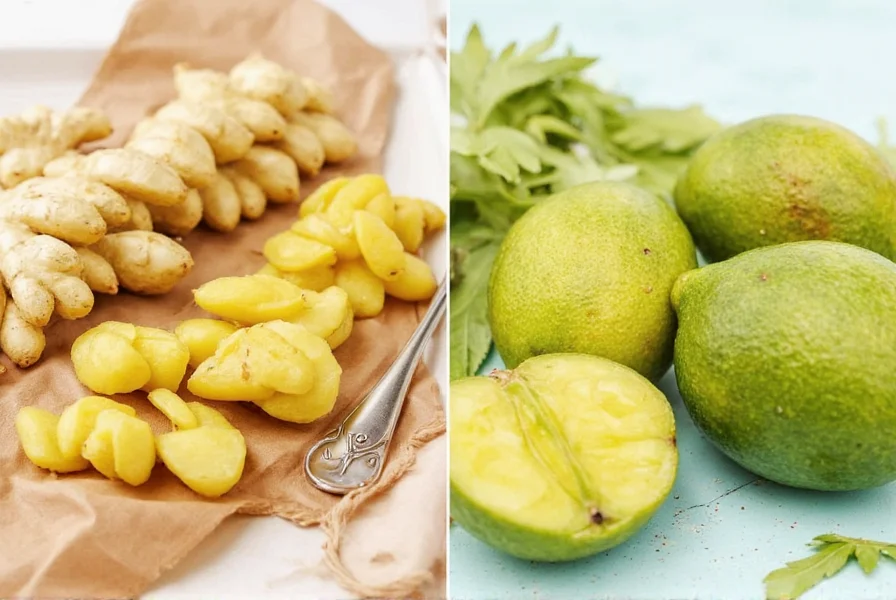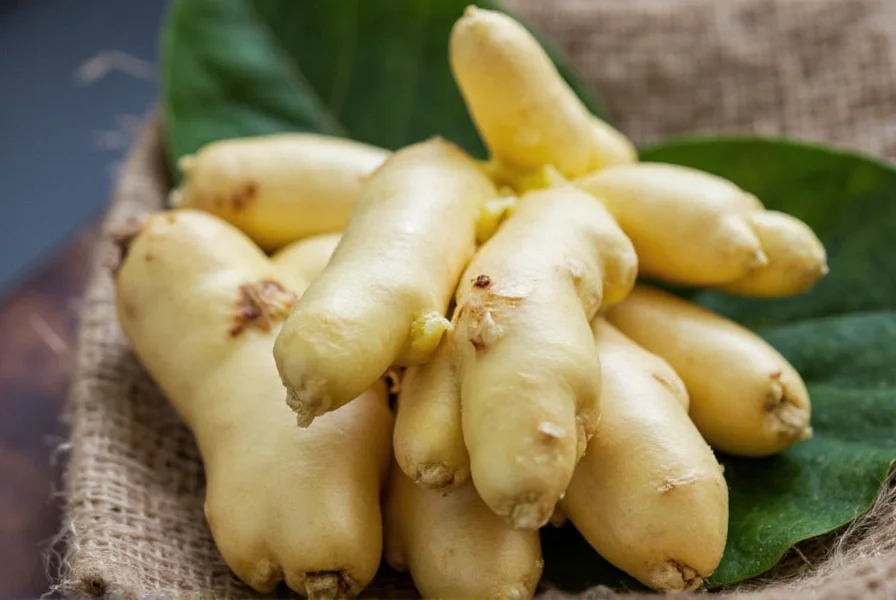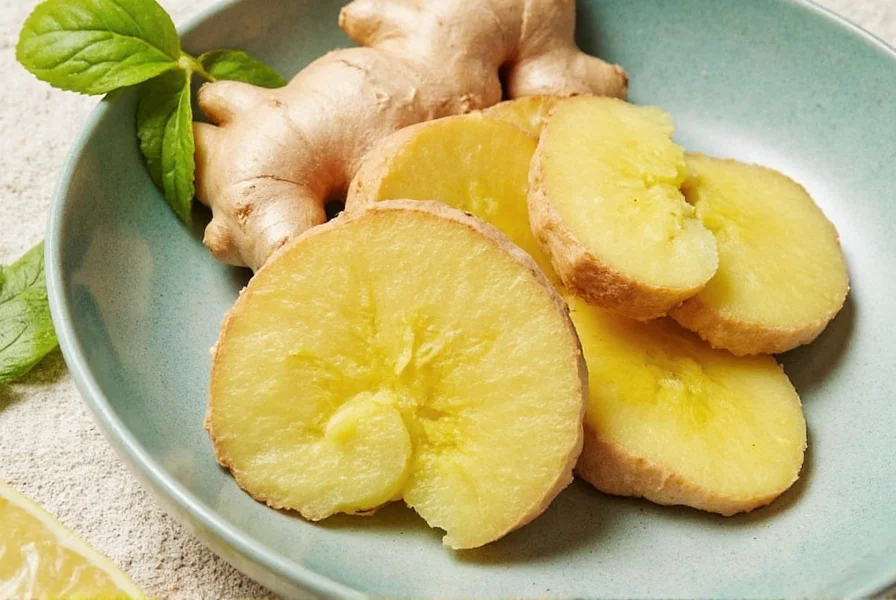Introduction
If you've ever found yourself staring at a jar of ginger in your kitchen, wondering whether it's still good or how to use it, you're not alone. While many people know the basics of ginger, fewer understand the unique qualities of young ginger. This is where things get interesting.
In this guide, we'll take a deep dive into young ginger—what it is, why it's special, and how to make the most of it in your cooking. Whether you're a seasoned chef or a curious home cook, this article has something for you.
What Is Young Ginger?
Young ginger is a variety of ginger that's harvested before it fully matures. Unlike dried ginger, which is often used in baking or traditional medicine, young ginger retains more moisture and a milder, sweeter flavor profile.
This variety is particularly popular in Asian cuisines, where it's used in soups, stir-fries, and even beverages like ginger tea. It's also a key ingredient in many traditional remedies for colds and digestive issues.

Why Choose Young Ginger?
There are several reasons why young ginger might be your go-to choice:
- Flavor: Young ginger has a milder, more delicate taste compared to dried ginger, making it ideal for dishes where you don't want the spice to overpower other ingredients.
- Texture: Its moist, tender flesh makes it easy to grate, slice, or crush, which is perfect for both raw and cooked applications.
- Health Benefits: Rich in antioxidants and anti-inflammatory compounds, young ginger can support digestion, reduce nausea, and even help alleviate muscle pain.
- Versatility: From sauces to teas, it can be used in a wide range of recipes, making it a valuable addition to any kitchen.
But here's the thing: young ginger isn't just about taste—it's about timing. The difference between young and mature ginger is subtle, but it can significantly impact the final dish.
How to Store Young Ginger
Proper storage is key to keeping your young ginger at its best. Here are some tips:
- Refrigerator: Wrap the ginger in a paper towel and place it in a resealable bag. It can last up to 3 weeks in the fridge.
- Frozen: For long-term storage, freeze sliced or grated ginger in an airtight container. It can stay good for up to 6 months.
- Whole vs. Sliced: Whole pieces tend to last longer than sliced ones, as they're less exposed to air and moisture.
- Avoid Moisture: Keep it away from water and humidity, which can cause mold and spoilage.
Storing young ginger correctly ensures you always have a ready supply of this flavorful ingredient on hand.

Cooking with Young Ginger
Now that you know how to store it, let's talk about how to use young ginger in the kitchen. Here are some popular uses:
- Soups and Broths: Add thin slices or grated ginger to chicken soup, miso soup, or tomato-based broths for a warm, spicy kick.
- Stir-Fries: Use it in vegetable or meat stir-fries for a bright, zesty flavor. Grate it finely and mix into the sauce for extra depth.
- Marinades: Mix grated young ginger with soy sauce, garlic, and oil to create a flavorful marinade for chicken, fish, or tofu.
- Teas and Beverages: Boil sliced ginger in water, add honey and lemon, and enjoy a soothing cup of ginger tea.
- Desserts: In some cultures, young ginger is used in cakes, cookies, and even ice cream for a subtle, spicy twist.
One of the best things about young ginger is that it doesn't need to be peeled before using. A quick scrub under running water is usually enough to remove any dirt.
Buying Guide for Young Ginger
| Feature | Quality Indicator | Why It Matters |
|---|---|---|
| Appearance | Smooth, firm skin with no soft spots or discoloration | Indicates freshness and good quality |
| Smell | Pungent and slightly sweet | Strong aroma means it's still potent and flavorful |
| Texture | Moist and tender, not dry or shriveled | Shows it's been recently harvested and hasn't lost moisture |
| Size | Varies depending on the variety | Larger pieces are better for slicing; smaller ones are ideal for grating |
Here are some top products to consider when purchasing young ginger:
- Organic Young Ginger: Ideal for health-conscious cooks. Great for teas, smoothies, and natural remedies. Suitable for all occasions, especially when you want to avoid chemicals.
- Local Farmer's Market Ginger: Often fresher and more flavorful than store-bought options. Perfect for those who prefer supporting local agriculture. Best for special meals or when you want a unique taste.
- Frozen Young Ginger (Pre-Grated): A convenient option for busy chefs. Retains flavor and potency for months. Excellent for quick cooking or meal prep.
- Asian Market Ginger: Known for its high quality and strong flavor. Popular among those who cook traditional Asian dishes. Best for authentic recipes and bold flavors.
Whether you're looking for convenience, organic options, or the best flavor, there's a young ginger option that fits your needs.

Frequently Asked Questions
What exactly is young ginger?
Young ginger refers to ginger that has been harvested before reaching full maturity. It has higher moisture content than mature ginger but less than freshly dug ginger, resulting in a tender texture and milder flavor profile. This variety is prized for its delicate taste and versatility in both raw and cooked applications.
How is young ginger different from regular fresh ginger?
Young ginger is harvested earlier than mature ginger, resulting in thinner skin, higher moisture content, and a milder flavor. Regular fresh ginger typically refers to mature ginger with tougher skin and stronger flavor. Young ginger doesn't require peeling and has a more delicate texture, while mature ginger is better suited for dishes needing intense ginger flavor.
How long does young ginger last?
When stored properly in the refrigerator (wrapped in a paper towel inside a resealable bag), young ginger typically lasts 2-3 weeks. If frozen, it can maintain quality for up to 6 months. The key is to minimize exposure to moisture and air, which accelerate spoilage.
Can I substitute young ginger for dried ginger in recipes?
Yes, but with adjustments. Generally, use three times the amount of young ginger as you would dried ginger. For example, if a recipe calls for 1 teaspoon of dried ginger, use 3 teaspoons (1 tablespoon) of grated young ginger. Remember that the flavor profile will be milder and less concentrated.
Do I need to peel young ginger before using it?
No, one of the advantages of young ginger is that it typically doesn't require peeling. Its skin is thin enough that a thorough scrub under running water is usually sufficient. This helps preserve more of the flavorful compounds that concentrate near the skin.
What are the best ways to prepare young ginger for cooking?
Young ginger can be sliced thinly for broths, grated finely for marinades, julienned for stir-fries, or minced for sauces. For maximum flavor extraction, crush it slightly before adding to liquids. When grating, a microplane works best to get the most yield from the ginger with minimal waste.
Is young ginger good for health?
Yes, young ginger retains many beneficial compounds including gingerol, which has anti-inflammatory and antioxidant properties. It can help with digestion, reduce nausea, alleviate muscle pain, and may support immune function. Its health benefits are similar to fresh ginger but may be slightly more concentrated due to partial drying.
How can I tell if my young ginger has gone bad?
Signs that young ginger has spoiled include soft or mushy spots, visible mold, a sour or unpleasant odor (instead of the characteristic spicy, citrusy aroma), and dark discoloration. If it feels slimy to the touch or has an off smell, it should be discarded.
Conclusion
Young ginger is more than just a spice—it's a versatile and powerful ingredient that can elevate your cooking and support your health. From its mild, sweet flavor to its numerous culinary uses, it's a must-have for any kitchen.
Understanding how to store, use, and buy young ginger ensures that you're always prepared to bring out its best qualities in every dish. Whether you're making a comforting soup, a zesty stir-fry, or a soothing cup of tea, young ginger is a game-changer.
So next time you see a piece of young ginger, don't pass it by. It might just be the secret ingredient your recipe needs.










 浙公网安备
33010002000092号
浙公网安备
33010002000092号 浙B2-20120091-4
浙B2-20120091-4